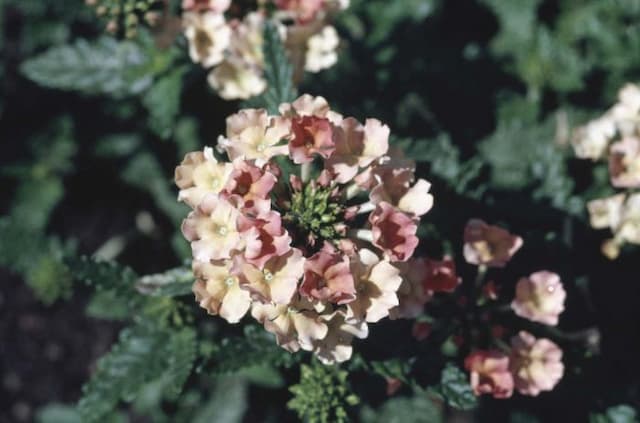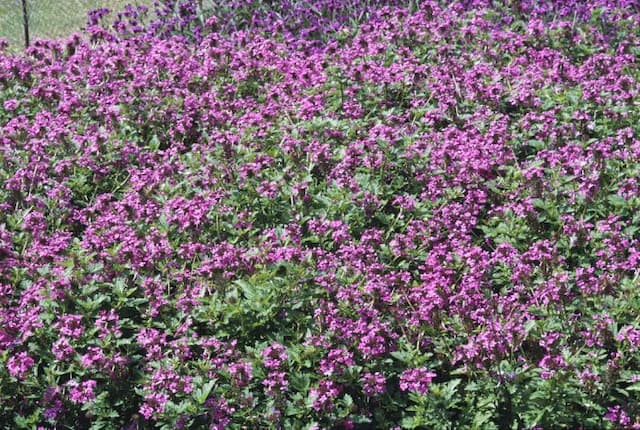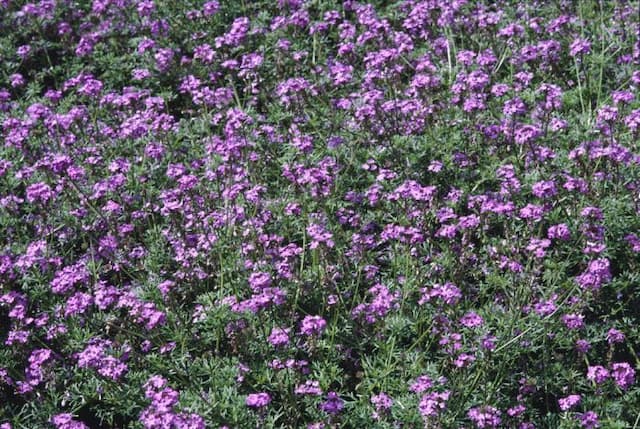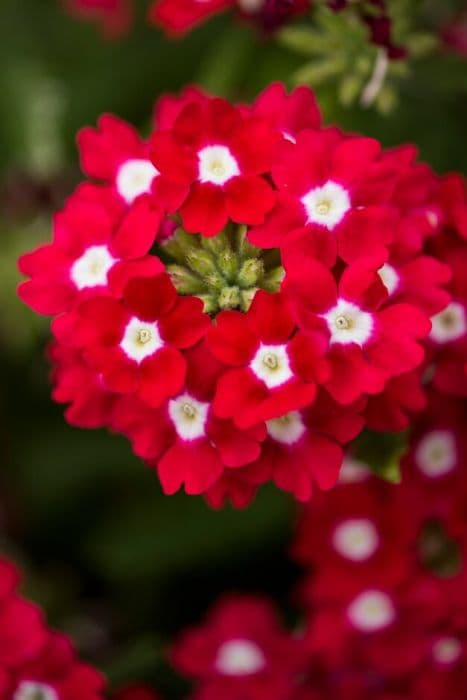Vervain 'White Spires' Verbena hastata 'White Spires'

ABOUT
An upright, clump-forming perennial to around 1.2m tall with lance-shaped leaves. Branching, candelabra-like stems bear long spires of small, white flowers from early summer into autumn
About this plant
 Names
NamesFamily
Verbenaceae
Synonyms
Blue Vervain, Swamp Verbena, Simpler's Joy, Wild Hyssop
Common names
Verbena hastata.
 Characteristics
CharacteristicsLife cycle
Perennials
Foliage type
Deciduous
Color of leaves
Green
Flower color
White
Height
2-4 feet (0.6-1.2 meters)
Spread
2-3 feet (0.6-0.9 meters)
Plant type
Herb
Hardiness zones
3-7
Native area
North America
Benefits
 General Benefits
General Benefits- Attracts Pollinators: The plant is known to attract bees, butterflies, and other beneficial insects, which are vital for pollination.
- Ornamental Value: 'White Spires' has attractive white flower spikes that enhance the visual appeal of gardens.
- Drought Tolerance: Once established, the plant is quite drought-tolerant, making it suitable for xeriscaping or low-water gardens.
- Wildlife Habitat: Provides shelter and food for wildlife, particularly beneficial insects and birds.
- Easy to Grow: It is generally easy to cultivate in a variety of soil types and climate conditions.
- Perennial Growth: Being a perennial, it returns each year, providing long-term presence in the garden.
- Erosion Control: The root systems can help stabilize soil and control erosion.
- Cottage Garden Aesthetic: It's ideal for cottage garden designs, adding height and texture to the plantings.
 Medical Properties
Medical Properties- Antipyretic: Verbena hastata is traditionally used to reduce fever.
- Diaphoretic: It can induce sweating and has been used to help the body eliminate toxins.
- Expectorant: The plant has properties that may help in expelling mucus from the lungs and throat.
- Anti-inflammatory: It may be used to relieve inflammation and associated pain.
- Antispasmodic: It is said to relieve muscle spasms and cramps.
- Anxiolytic: Verbena hastata may have a mild calming effect and be used for anxiety relief.
- Sedative: It is occasionally used to help with sleep disturbances or insomnia.
- Astringent: The plant has been used topically to reduce bleeding and heal wounds.
- Anti-rheumatic: Some herbalists use it to alleviate symptoms of rheumatic conditions.
 Air-purifying Qualities
Air-purifying QualitiesThis plant is not specifically known for air purifying qualities.
 Other Uses
Other Uses- Ornamental dye: The flowers of Blue Vervain can be used to create a natural dye for fabrics, offering a range of colors from greens to browns depending on the mordant used.
- Insect attraction: Blue Vervain is a magnet for butterflies and bees, making it an excellent choice for pollinator gardens or for those wanting to boost local pollinator populations.
- Fish bait: The slimy seeds of Blue Vervain have been used historically as a bait for fish, particularly catfish, in traditional fishing practices.
- Photography prop: Its tall, elegant spires and white flowers make Blue Vervain an attractive subject for nature and garden photography, adding depth and interest to compositions.
- Educational tool: The plant can be used in educational settings to teach about native plant species, their role in the ecosystem, and the importance of plant-pollinator relationships.
- Flower essence: Blue Vervain can be made into a flower essence, believed by some natural health practitioners to help with emotional and spiritual healing, excluding any direct medical uses.
- Livestock feed: Although not a common feed, in some regions the plant has been used as a supplementary forage for livestock.
- Biodegradable mulch: Dried Blue Vervain can be used as a biodegradable mulch in gardens to suppress weeds and retain soil moisture.
- Artistic inspiration: The structure and color of Blue Vervain flowers can inspire artists and designers, influencing patterns, shapes, and themes in various art forms.
- Soil stabilization: The root system of Blue Vervain can help stabilize soil in areas prone to erosion, promoting a healthier watershed.
Interesting Facts
 Feng Shui
Feng ShuiThe Blue Vervain is not used in Feng Shui practice.
 Zodiac Sign Compitability
Zodiac Sign CompitabilityThe Blue Vervain is not used in astrology practice.
 Plant Symbolism
Plant Symbolism- Healing and Purification: Verbena hastata, commonly known as Blue Vervain, has been historically associated with healing, both in a physical and a spiritual sense. It was often used in poultices and teas for its medicinal properties, and was also thought to ward off evil spirits.
- Protection: Blue Vervain was believed to offer protection. In some traditions, it was used in ceremonies and rituals to safeguard individuals from malevolent forces.
- Tranquility: The plant is symbolic of peace and calmness. Its presence was often seen as soothing, making it a symbol for bringing tranquility into one's life.
- Divine Inspiration: It has ties to the divine and is often associated with the power to inspire creativity or a spiritual connection, as it was considered a herb of the goddesses and gods in some cultures.
- Enchantment: In folklore, Blue Vervain is sometimes linked to enchantment and love, believed to be able to kindle passion and entice lovers.
 Water
WaterBlue Vervain 'White Spires' should be watered deeply yet infrequently to encourage strong root growth. Allow the top inch of soil to dry out before watering again, which typically means watering once every 1 to 2 weeks, depending on climate conditions. During hot, dry spells, you may need to water more frequently. Provide the plant with about 1 to 1.5 gallons of water each time to ensure the moisture reaches deep into the root system. Be careful not to overwater, as Blue Vervain prefers well-draining soil and does not do well with soggy roots.
 Light
LightBlue Vervain 'White Spires' thrives in full sun to partial shade. The ideal spot for this plant would be an area where it can receive at least 6 hours of direct sunlight daily. If grown in too much shade, the plant may become leggy and produce fewer blooms. For the best growth and flowering, choose a location with ample morning sunlight and protection from the harsh afternoon sun, if possible.
 Temperature
TemperatureBlue Vervain 'White Spires' is hardy and can tolerate a range of temperatures, with an ideal growing range between 60°F to 75°F. It can survive minimum temperatures down to 0°F and is tolerant of summer highs up to 90°F. This hardiness makes it a versatile option for gardeners in many climates, but it should be protected from extreme cold or unexpected frost events.
 Pruning
PruningBlue Vervain 'White Spires' should be pruned to encourage bushier growth and more prolific flowering. Prune in early spring before new growth begins, cutting back the plant by about a third of its height. Deadheading spent flowers throughout the season can also promote additional blooming. The best time for major pruning is late winter to early spring, just as the plant emerges from dormancy.
 Cleaning
CleaningAs needed
 Soil
SoilBlue Vervain 'White Spires' thrives best in a soil mix that is well-draining, rich in organic matter, and has a pH ranging from 6.0 to 7.5. A combination of garden soil, compost, and perlite or sand will create an ideal environment for this plant.
 Repotting
RepottingBlue Vervain 'White Spires' should typically be repotted every 2 to 3 years, depending on its growth rate and the size of the container. Ensure that the new pot has adequate drainage.
 Humidity & Misting
Humidity & MistingBlue Vervain 'White Spires' prefers moderate humidity levels but is quite adaptable and can tolerate a range of humidity conditions found in typical outdoor environments.
 Suitable locations
Suitable locationsIndoor
Place in bright, indirect light and ensure good air circulation.
Outdoor
Full sun, well-drained soil, and space for air flow.
Hardiness zone
3-7 USDA
 Life cycle
Life cycleVerbena hastata 'White Spires', commonly known as Blue Vervain, initiates its life cycle when seeds germinate in early to late spring, preferring moist conditions. Seedlings develop into upright, clump-forming plants with lance-shaped leaves and begin vegetative growth, establishing a strong root system. During summer, the plant enters the flowering stage, producing tall, elegant spikes of tiny white flowers that attract butterflies and other pollinators. After pollination, flowers develop into small nutlets (fruits) by late summer to early fall, which contain the seeds for the next generation. Over autumn and winter, Blue Vervain enters dormancy, with above-ground parts dying back to the ground in areas with frost. The plant completes its life cycle when it regrows from the rootstock or new seeds sprout the following spring.
 Propogation
PropogationPropogation time
Spring-Early Summer
Propogation: The Blue Vervain, scientifically known as Verbena hastata 'White Spires', is propagated most effectively through seed. The ideal time to sow seeds is in the fall or late winter, allowing for stratification, which enhances germination. To propagate by seed, scatter the seeds on the surface of a well-draining seed starting mix and lightly press them into the soil without covering them, as they require light to germinate. Keep the soil moist but not waterlogged, and place the seed tray in a bright area avoiding direct sunlight. Germination can take anywhere from two to four weeks. Once the seedlings are large enough to handle, transplant them into individual pots and later, after the risk of frost has passed, into the garden.

![Vervain [Donalena Lavender Grace]](/_next/image?url=https%3A%2F%2Fplants-admin.emdemapps.com%2Fimages%2Fplants%2F%2Fimages%2F604b575c837e7.png&w=640&q=75)





![Vervain [Endurascape Pink Bicolor]](/_next/image?url=https%3A%2F%2Fplants-admin.emdemapps.com%2Fimages%2Fplants%2F%2Fimages%2F604b594e749b0.png&w=640&q=75)
